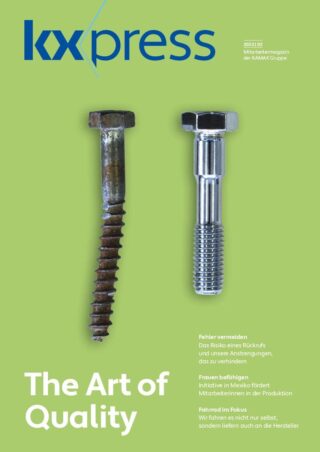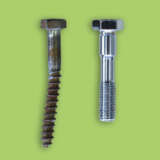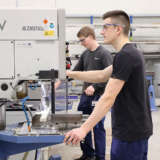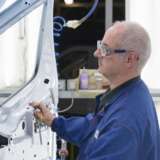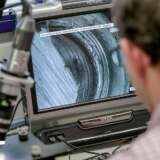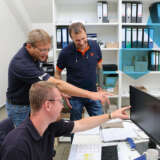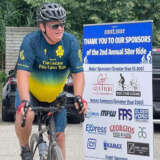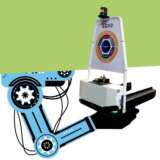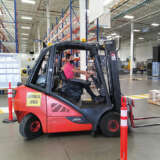
The art of
avoiding
mistakes
So many new parts and machines, lots of changes in the production environment and a tense backlog situation: This is currently the challenging situation in nearly all plants worldwide. As a result, quality is not always the highest priority. The previous two pages show that this can quickly turn into an extremely costly recall. That’s why we do everything we can to ensure our outstanding quality, and it’s important that each and every one of us does their part.
Mistakes, of course, can always happen, specially where people are working. It is almost impossible to eliminate them completely. We forget things, we drop parts, and we can be careless at times. This happens not only in our private lives, but also in the workplace. The task of the global quality management team and, most importantly, of our colleagues in the plants is to keep the risk of errors as low as possible. Eik Stachowicz, the new VP of Global Quality Management, expresses it even more ambitiously: “Our goal is a zero defect strategy!”
Learning and thinking ahead
Achieving this goal is an art that requires a lot of learning and forward thinking. Here is one simple example to illustrate the point: You go to work in the morning and forget your wallet at home. To prevent this mistake from happening again, you write yourself a note and hang it on the front door. But even after you have taken this precaution, there’s still a risk that you’ll overlook the note on your way out. So you outfit your wallet with a chip and if the front door doesn’t detect it when you leave, an alarm will go off. But there is still the possibility that the system will fail for technical reasons. Therefore, to be on the safe side, you decide to sew the wallet to your pants. But is this really a 100 percent way to rule out the possibility of a failure?
If we continue to play this mental game, we can constantly come up with new risk factors that could cause us to forget the wallet anyway. Presumably, at some point you’ll come up with the idea of storing money in the office in case your wallet is left at home. This example of learning and thinking ahead to avoid mistakes can be applied to our production. We have been optimizing and adapting our processes for decades. Hundreds of employees worldwide test, document, and analyze so that our customers have no reason to doubt our quality.
This gets underway at the very beginning of the process: When we receive requests for new orders. Customers send us their drawings of a screw or other molded part and we check whether it is even possible to produce this part. This is already a task that is shared among quality management, engineering, and application technology. The customer provides us with requirements for product features (including, for example, a tensile strength tolerance of 50 MPa), requirements for the quenching and tempering and coating process, and packaging. Based on past experience, our experts then work to determine the feasibility of production and calculate the price. KAMAX has established worldwide standards, norms, processes and checklists for all of these steps.

Universal hardness tester with automatic tool changer in action

Does everything fit? Freshly pressed bolt on the test stand in cold forming
Measuring and testing marathon
Sample components are then produced and delivered, for series production approval. The steel used is scrutinized by our materials laboratories, the parts are run through a wide range of measuring instruments after almost every process step, assembly is simulated and corrosion resistance is tested over a period of one month. To ensure that everything is correct, each of the countless measuring instruments at KAMAX are regularly recalibrated.
These processes are very similar in all plants. The advantage of this approach is that we have the opportunity to learn from each other. Eik Stachowicz is keen to promote this: “We need a controlled learning process on a global level so that colleagues can share their experiences and so that we can ensure that defects do not occur multiple times in different places. Not waiting, but proactively intervening in processes, improving and avoiding defects.”
Because mistakes lurk everywhere. Putting the wrong label on the packaging, making the wrong entry in SAP, dropping screws and not noticing them: These are all little things that can quickly lead to a complaint. In every department, things can happen at almost every work step that negatively affect our quality. “Quality concerns us all, that’s a very important point”, emphasizes Eik Stachowicz. “It doesn’t matter whether I’m creating master data, assigning papers to a container, or illegally putting a dropped screw back into a box.” That makes it all the more important to document everything. Because if errors occur, we have to be able to prove exactly what we are responsible for and what we are not. Only then will the insurance cover the costs.

Examination of a bolt head using a microscope after fastening
Bolts under general suspicion
The documentation takes on special significance because of the role of our products in many mobility applications. It is in the design of a bolted connections that it is almost always the weakest link. Knut Westphal, former VP Quality, is most familiar with this: “When something is overloaded, it’s the bolt that breaks, not the engine block or the cylinder head. That’s the way things have been designed to work. That doesn’t mean the screw is the faulty part.” Still, that has often put our company in a very difficult position. “It means we’re left holding the bag for the time being, and that we have to play defense. And it is always the case that we then have to prove that it is not our screw that has qualitative defects or is the cause of the damage”, explains Knut Westphal.
To ensure that we can continue to prove that we produce high-quality parts, Quality Management is planning a new initiative in the coming months that will enable employees to master the art of avoiding mistakes even more in the future. The aim is not only to raise awareness of quality among all employees, but also to take training and processes to a new level.
KXpress
